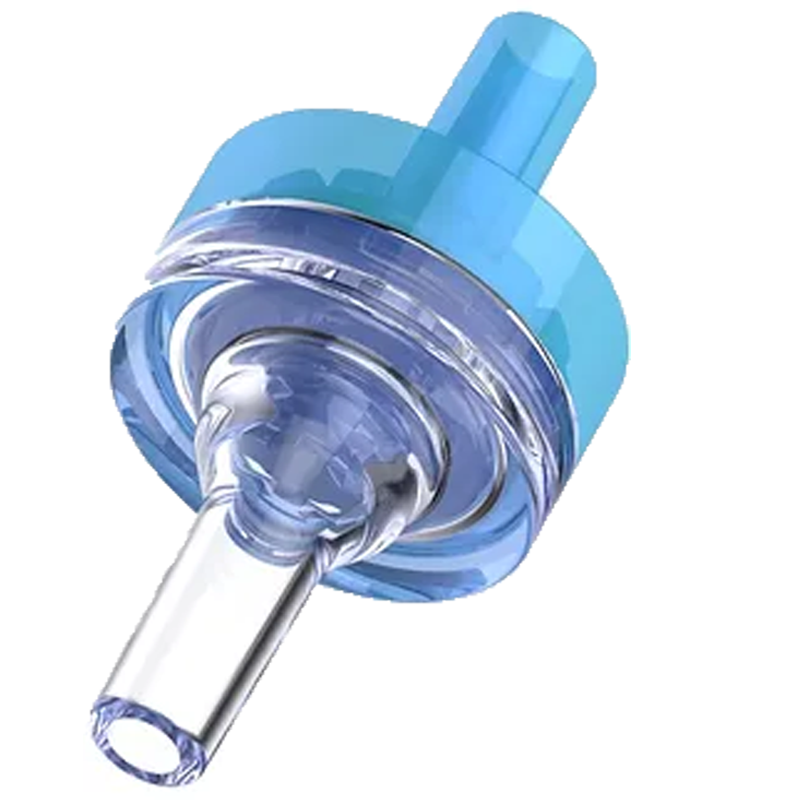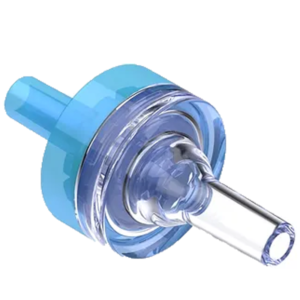
Item Description
One-way Dome Valve Plastic&amp Siliocne Medical Components
Features & benefits
-
Designed to prevent back-flow during a wide variety of fluid delivery applications
-
Low opening pressue: 0.43psi (0.03 bar)
-
Backpressure resistance > 45 psi (3.1 bar)
- Specifications & technical information
A one-way dome valve made of polycarbonate housing and featuring a silicone dome seal is a specialized valve designed to control the unidirectional flow of fluids or gases.
- Polycarbonate Housing: The valve’s housing is constructed from polycarbonate, a durable and transparent thermoplastic material. Polycarbonate is often chosen for its excellent strength, impact resistance, and clarity. In this context, it provides a robust structure for the valve, ensuring longevity and ease of maintenance.
- Silicone Dome Seal: The valve incorporates a silicone dome seal, which plays a crucial role in ensuring the valve’s one-way functionality. Silicone is a biocompatible material with excellent sealing properties. It’s commonly used in medical and healthcare applications due to its resistance to extreme temperatures, chemicals, and its ability to maintain flexibility and elasticity over time. The silicone dome seal provides an effective barrier, allowing fluid or gas flow in one direction while preventing backflow.

Materials:
-
Polycarbonate housing
-
Silicone dome seal
Working Principle
The one-way dome valve with a polycarbonate housing and a silicone dome seal operates based on the principle of unidirectional flow control. When pressure or flow is applied in the desired direction, the silicone dome seal flexes, allowing fluid or gas to pass through. However, when there’s an attempt at reverse flow, the silicone seal provides a tight and reliable closure, preventing any flow in the opposite direction.
Applications
This type of valve is particularly well-suited for medical applications, such as in medical devices, where the unidirectional flow of fluids or gases is critical to patient safety and the integrity of medical procedures. It’s commonly found in devices like infusion pumps, respiratory equipment, or fluid delivery systems, ensuring that fluids or gases move in the intended direction without the risk of contamination or improper flow.
